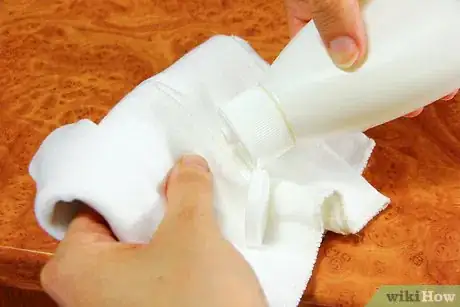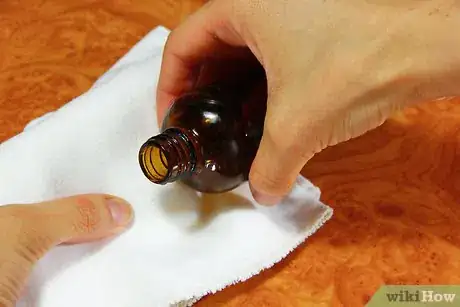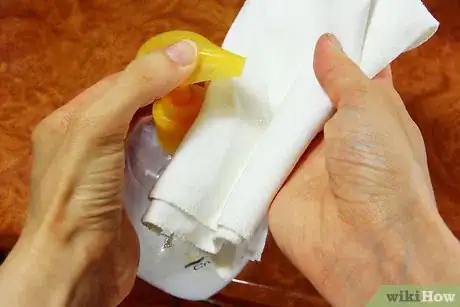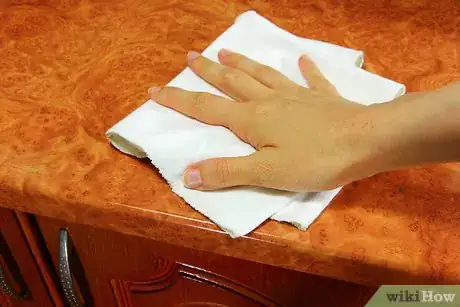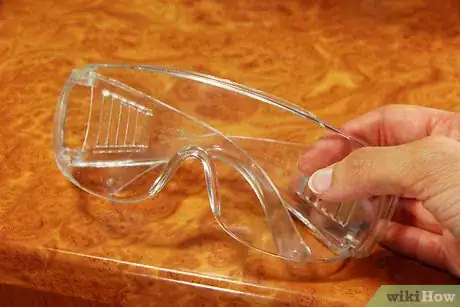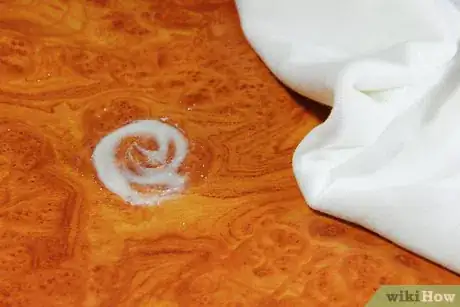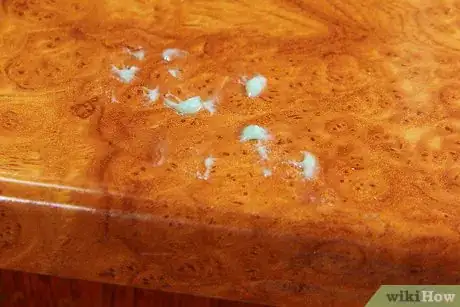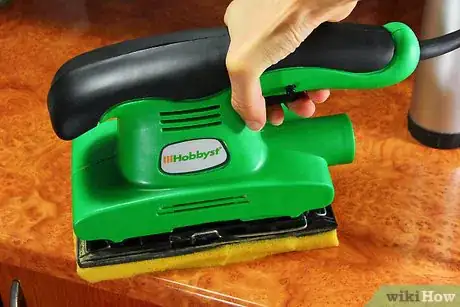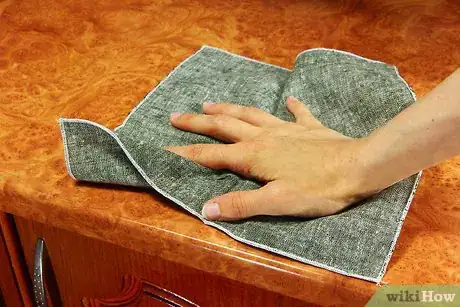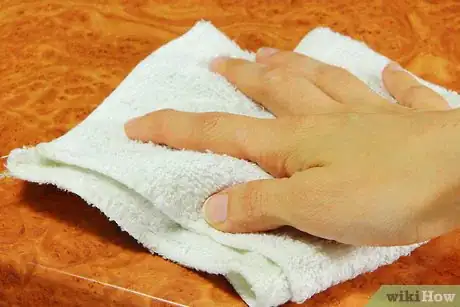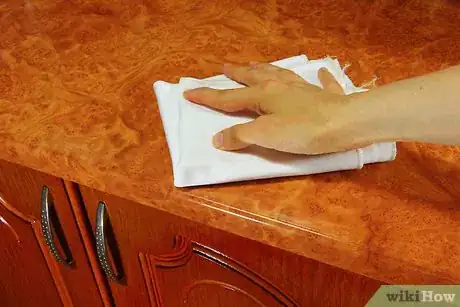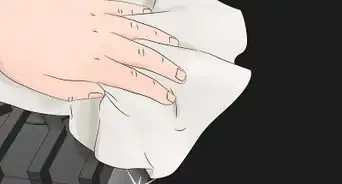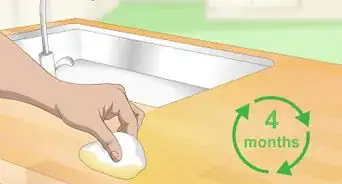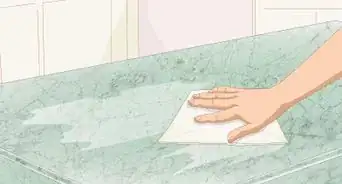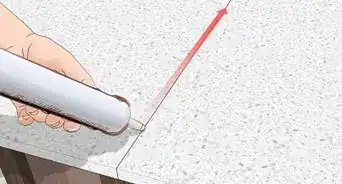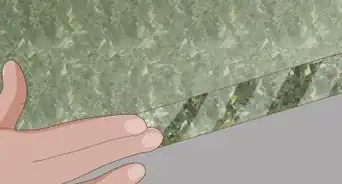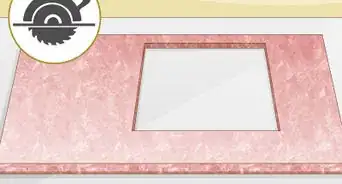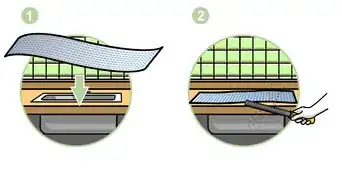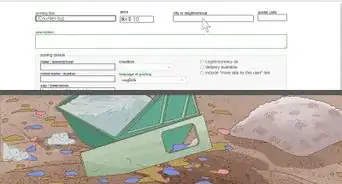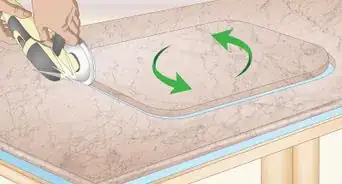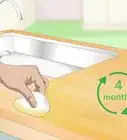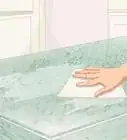This article was co-authored by Michelle Driscoll, MPH. Michelle Driscoll is the Owner of Mulberry Maids, which is based in Fort Collins, Colorado. With five years of experience, her business specializes in cleaning homes and small offices. She holds a Masters in Public Health from the Colorado School of Public Health. Additionally, Mulberry Maids has an A+ rating from the Better Business Bureau.
There are 9 references cited in this article, which can be found at the bottom of the page.
This article has been viewed 56,742 times.
Epoxy countertops are antibacterial and built to withstand regular use. And, as long as you have the right materials, cleaning epoxy countertops is simple and effective. You can perform surface cleaning, polish the countertop's surface, and get rid of scratches or marring to maximize your countertop's durability. With care and routine cleaning, your countertop will stay in good condition for years!
Steps
Cleaning Best Practices
-
1Clean your countertop with dish soap or a streak-free glass cleaner. You can use a cleaner marketed as leaving no streaks or pH-balanced dish soap. Put a few drops of cleaner on a washcloth or dip the cloth in warm water. Wipe the countertop with the washcloth to help maintain its natural shine.[1]
- You can find pH-balanced dish soaps by checking the label or searching for balanced dish soaps online.
-
2Remove stains with an acetone-based nail polish remover. Nail polish removers containing acetone can remove stubborn food stains like coffee, red wine, and berries. Dip a washcloth in nail polish remover and rub the stain away in circular motions. If the stain doesn't lift easily, apply more pressure as you rub.[2]
- Check the nail polish's label to make sure it contains acetone.
- Nail polish remover can make the fabric dye come off of your washcloth. Use a white rag to prevent staining your countertop with fabric dyes.
- Avoid using bleach to remove stains, as bleach can stain epoxy countertop.
Advertisement -
3Shine your countertop with mineral oil. Pour a dime-sized amount of food-safe mineral oil on a washcloth. Rub it into your countertop using a circular motion until you give the entire surface an extra gloss.[3]
- Don't apply too much mineral oil to the washcloth, as this can cloud your countertop's surface. You can wipe away excess mineral oil with a dry cloth.
- Only use mineral oil once a week maximum or else it could create a haze on your countertop.[4]
- You can buy mineral oil, also known as finish oil, online or at most home improvement stores.
-
4Remove mild marring with dish soap or acetone. Apply dish soap to a washcloth and rub at the marred surface in circular motions. For persistent marring, apply acetone to a sponge or light-duty scrubber and use mild pressure to remove the marring.[5]
- Marring refers to rough patches or light scratches on your countertop.
- Never use abrasive pads or cleaners to remove scratches, as they can dull your countertop's shine.
-
5Clean spills immediately when they happen. Wipe away any food spills with a washcloth or paper towel. Apply baking soda or a mild countertop cleaner to your washcloth to help prevent the spills from staining.[6]
- To clean spills with baking soda, make a paste by mixing your baking soda with water in a ratio of 2 tablespoons (30 ml) of water for ½ cup (104 g) of baking soda. Apply the paste to the stain, let it sit for 5 minutes, and wipe it off with a washcloth.
- Epoxy countertops stain easily. Cleaning spills as you notice them will keep it in its best condition.[7]
Polishing or Repairing Damage
-
1Put on safety goggles and a respirator. Your goggles and respirators will protect your eyes and lungs while you polish the countertop. If you're sensitive to loud noises, put in earplugs as well.
-
2Apply coin-size circles of polishing paste to the countertop's surface. Dab polishing paste in a circular motion along the surface of the epoxy countertop. Do not rub the polish into the surface yet, as you will do so while buffing the countertop.[8]
- Choose a polishing paste specifically made for epoxy or laminate countertops.
-
3Add extra polishing paste onto the countertop scratches. For scratches in your epoxy countertop, apply a polishing paste along the width of the scratch in several dots. The dots should have the same approximate diameter as the scratch.[9]
- You can buy polishing pastes from most home improvement stores.
-
4Polish your epoxy countertop with a buffer attachment. Purchase or rent a polishing buffer drill attachment and attach it over your drill bit. Turn the drill on to a low or medium speed and polish the surface in circular motions. Using circular motions will prevent the buffer from leaving a pattern on the surface.[10]
- Move the drill back and forth in even motions to work the polishing paste into the scratch.[11]
- If you don't have a drill or buffer attachment, you can also hand-buff the countertop. Take a dry cloth and apply heavy pressure while wiping the countertop in a circular motion.
-
5Wipe away the polish residue with a damp cloth. After buffing the countertop, get a washcloth wet with warm water and dish soap. Use it to spot clean any excess polish that the buffer didn't remove.
-
6Dry the countertop with a cloth. Leaving the countertop to air dry can result in unsightly watermarks. Use a dry cloth to get rid of residual water after you've removed all of the polish.
-
7Apply a coating of liquid countertop polish after drying the countertop. Liquid polish helps retain the surface's luster after buffing and protects against stains or scratches. Spray the liquid polish along its surface and wipe away the excess with a dry cloth.
- Generally, you will only need to apply one coating of countertop polish.
-
8Reapply the liquid polish every few weeks. Countertop polish generally wears off and must be applied every several weeks. Spray more liquid polish whenever the first coat wears off or your countertop looks dull.
Warnings
- Do not wax your epoxy countertop or use a polish containing wax. Waxing can dull your epoxy countertop's shine over time.[12]⧼thumbs_response⧽
Things You'll Need
Performing Surface Cleaning
- Streak-free cleaner
- Dish soap
- Washcloth
- Water
- Mineral oil
- Baking soda
- Mild household cleaner
- Nail polish remover
Polishing an Epoxy Countertop or Repairing Damage
- Countertop polish
- Drill
- Buffer attachment
- Washcloth
- Polish spray
- Water
- Safety goggles
References
- ↑ https://www.apartmenttherapy.com/easy-streakfree-countertop-cle-117271
- ↑ https://www.familyhandyman.com/kitchen/countertops/how-to-remove-stains-from-plastic-laminate-countertops/view-all/
- ↑ http://chemtops.com/wp-content/uploads/2017/05/OPSMFG-EPOXY-CARE.pdf
- ↑ https://www.locscientific.com/cleaning-and-care-of-epoxy-resin-countertops/
- ↑ http://chemtops.com/wp-content/uploads/2017/05/OPSMFG-EPOXY-CARE.pdf
- ↑ https://www.architecturaldigest.com/story/how-to-clean-kitchen-countertops
- ↑ http://chemtops.com/wp-content/uploads/2017/05/OPSMFG-EPOXY-CARE.pdf
- ↑ https://www.youtube.com/watch?v=Wh7BXJGrsRo&feature=youtu.be&t=582
- ↑ https://www.youtube.com/watch?v=YNEjczMGxrw&feature=youtu.be&t=33
About This Article
You can clean your epoxy countertops with a few simple household cleaners. As soon as you notice a stain, sprinkle a little baking soda onto it to absorb the moisture and prevent it from staining your countertop. Then, use a washcloth and a little dish soap, glass cleaner, or mineral oil to clean the surface. For stubborn stains like red wine and coffee, apply an acetone-based nail polish remover and buff the countertop in circular motions with a clean cloth. You might have to apply some pressure if the stain doesn’t come out at first. For more tips from our Cleaning co-author, including how to repair a damaged epoxy countertop, read on!
